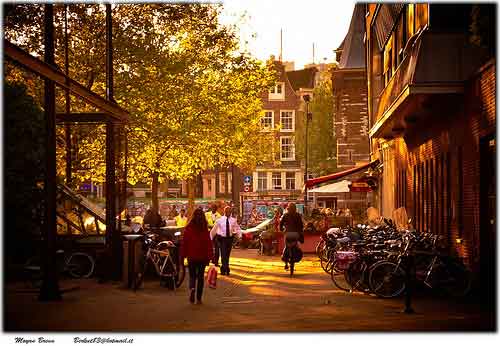“The bicycle was regarded, more than most places in the world — as ‘good for society,’” he writes in an email. “After the bicycle boom in the late 1800s, many cycling clubs merged and then many of them merged again, morphing into cyclist ‘unions’, with political goals. What happened in most countries in the early 20th century was that sports cycling organizations were formed to further cycling as sport…. Not so in Denmark and the Netherlands. The cyclist unions — meaning organizations for promoting cycling as transport, etc. — stayed strong and separate and they gained political influence.”
Still, that didn’t stop planners from ripping out cycle tracks and starting to design streets for cars as Europe modernized in the wake of World War II. By the early 1960s, much of the cycling infrastructure that had existed in the pre-war era was gone, and the percentage of the population using bicycles for transportation fell to an all-time low of 10 percent.
Then history intervened. “The energy crisis in 1973 hit Denmark hard. Very hard,” writes Colville-Andersen. “Car-free Sundays were introduced in order to save fuel. Every second streetlight was turned off in order to save energy. A groundswell of public discontent started to form. People wanted to be able to ride their bicycles again — safely. Protests took place…. The energy crisis faded, but then returned in 1979. More protests. One form of protest/awareness was painting white crosses on the asphalt where cyclists had been killed. This time, things happened. We started to rebuild our cycle track network in the early 1980s. Fatalities and injuries started falling. The network was expanded.
learn more about bikes in each city, and a video, at – The Atlantic Cities
// Photo – Moyan_brenn

Leave a comment